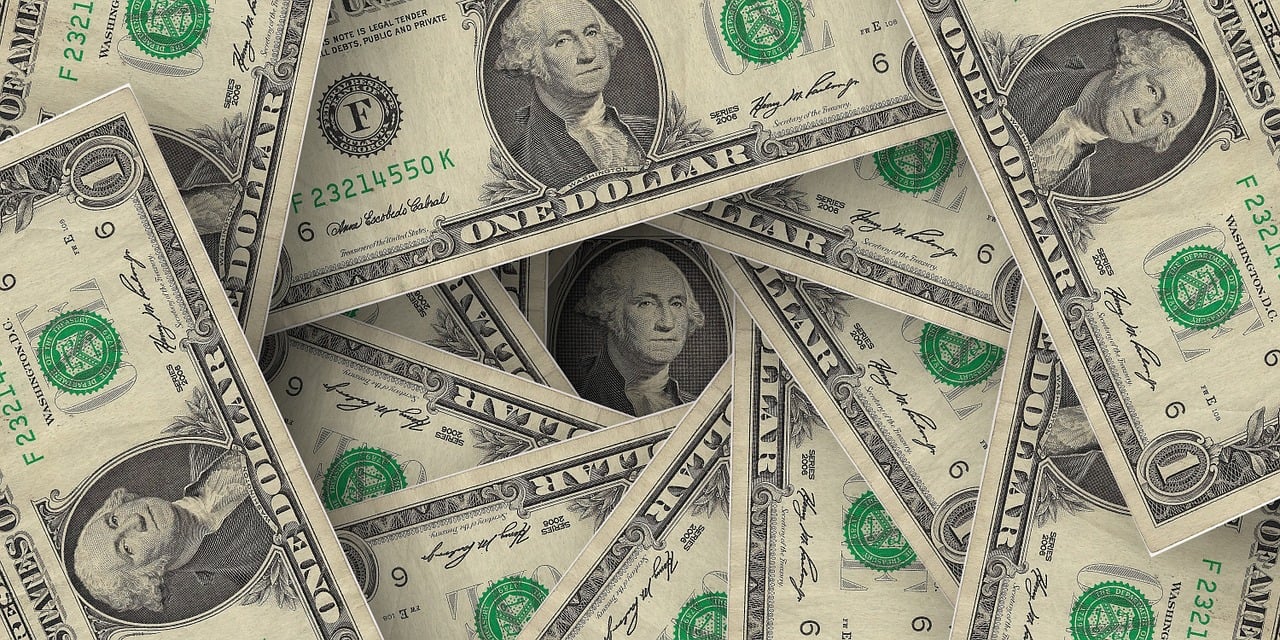
The dollar index (DXY00) today is up by +0.21% and posted a new 1.75-month high. Political risks in France and Japan are undercutting the euro and yen, respectively, to the benefit of the dollar. Higher bond yields today and weakness in stocks are also supporting the dollar. However, gains in the dollar are limited by dovish comments from New York Fed President John Williams, who said he would back "lower rates this year" if the economy evolved as expected.
The ongoing shutdown of the US government is bearish for the dollar as the shutdown entered its second week on Monday. The longer the shutdown is maintained, the more likely the US economy will suffer, a negative factor for the dollar.
New York Fed President John Williams said he would support "lower rates this year" if the economy evolved as expected, with inflation rising to around 3% and the unemployment rate increasing beyond its current 4.3%. He added. "There's more downside risks to the labor market and employment, and that is something that takes some of the upside risk off of inflation."
The markets are pricing in a 95% chance of a -25 bp rate cut at the next FOMC meeting on Oct 28-29.
EUR/USD (^EURUSD) today is down by -0.28% and posted a new 6-week low. Dollar strength today is undercutting the euro. Also, weaker-than-expected German trade news is weighing on the euro after German Aug exports and imports declined. Limiting losses in the euro was today's comments from French President Macron, who said he'll name a new prime minister by Friday evening, which could avoid the need to call for a snap election.
The account of the ECB's September 10-11 meeting was slightly hawkish and supportive for the euro as policymakers decided against an interest rate cut amid upside inflation risks, saying "While a further rate cut in the coming months would better protect the inflation target both under the baseline and across a range of adverse scenarios, the materialization of upside risks would instead warrant maintaining the current level of the policy rate."
German Aug exports unexpectedly fell -0.5% m/m, weaker than expectations of +0.2% m/m. Aug imports fell -1.3% m/m, weaker than expectations of -0.5% m/m.
Swaps are pricing in a 1% chance of a -25 bp rate cut by the ECB at the October 30 policy meeting.
USD/JPY (^USDJPY) today is up by +0.17%. The yen extended this week's selloff today and fell to a 7.75-month low against the dollar. The yen remains under pressure due to concerns that the election of Sanae Takaichi as the leader of Japan's ruling Liberal Democratic Party, which makes her the likely new Japanese Prime Minister, will result in a slower timeline for the BOJ's policy tightening. Takaichi's surprise victory has tempered expectations that the BOJ may raise interest rates as soon as this month, while raising concerns about an increased debt supply due to her support for expanded financial stimulus. Higher T-note yields today are also undercutting the yen.
Losses in the yen are limited today after today's news showed Japan's Sep machine tool orders posted their biggest increase in six months. Also, higher Japanese government bond yields have strengthened the yen's interest rate differentials after the 10-year JGB bond yield climbed to a 17-year high today at 1.701%.
Japan Sep machine tool orders rose +9.9% y/y, the biggest increase in six months.
December gold (GCZ25) today is down -29.20 (-0.72%), and December silver (SIZ25) is down -0.239 (-0.49%). Precious metal prices are moving lower today, with Dec silver falling from a contract high, and nearest-futures (V25) retreating from a 14-year high.
Today's rally in the dollar index at a 1.75-month high has sparked long liquidation in precious metals. Also, higher global bond yields today are weighing on precious metals. Gold prices are also under pressure today due to reduced safe-haven demand after Israel and Hamas announced a ceasefire.
Precious metals have surged over the past seven weeks, with Dec gold posting a contract high and nearest-futures (V25) gold posting an all-time high of $4,049.20 a troy ounce on Wednesday. With the US government remaining closed, demand for safe-haven assets, including precious metals, has increased. Also, political turmoil in France is boosting safe-haven demand for precious metals after French Prime Minister Lecornu resigned when President Macron named a new cabinet. In addition, demand for precious metals as a store of value is supporting prices after Sanae Takaichi, a proponent of easy fiscal and monetary policy, won Saturday's election to become the leader of the ruling LDP party and is likely to become the new Japanese Prime Minister. In addition, central bank buying of gold is underpinning gold prices after the People's Bank of China (PBOC) boosted its gold reserves for the 11th consecutive month in September, and Polish Central Bank Governor Glapinski stated today that his central bank continues to buy gold, with gold accounting for a quarter of its reserves.
Precious metals continue to receive safe-haven support due to uncertainty tied to US tariffs, geopolitical risks, and global trade tensions. Also, President Trump's attacks on Fed independence are boosting demand for gold. In addition, recent weaker-than-expected US economic news has bolstered the outlook for the Fed to keep cutting interest rates, a bullish factor for precious metals. The swaps market shows a 95% chance the Fed will cut the federal funds target range by 25 bp at the October 28-29 FOMC meeting.
Precious metals prices continue to receive support from fund buying of precious metal ETFs. Gold holdings in ETFs rose to a 3-year high on Wednesday, and silver holdings in ETFs rose to a 3-year high last Wednesday.







